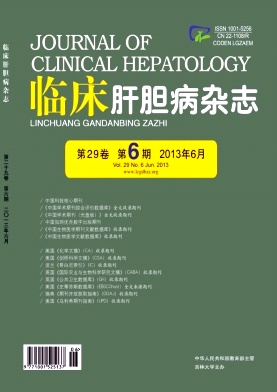Objective To investigate the risk factors for non-anastomotic biliary stricture (NABS) following liver transplantation.Methods A retrospective analysis was performed on 175 patients who underwent liver transplantation from January 2004 to December 2010 to analyze the risk factors for NABS, which included sex, age, primary disease, blood type, T-tube placement, acute rejection, biliary tract infection, cytomegalovirus infection, Child-Pugh score, cold ischemia time, warm ischemia time, duration of anhepatic phase, and mean hepatic artery blood flow within one week after operation.These patients were divided into early group, who underwent operation from January 2004 to December 2006, and late group, who underwent operation from January 2007 to December 2010;each group was further divided into two subgroups according to whether they developed NABS.The risk factors for NABS were determined by univariate and multivariate logistic regression analyses.Results The univariate logistic regression analysis showed that the risk factors for NABS were biliary tract infection, T-tube placement, and acute rejection in the early group (P<0.05) and that acute rejection was the risk factor in the late group (P=0.003) .The multivariate logistic regression analysis showed that acute rejection was significantly associated with NABS in the early group (P=0.014) .Conclusion The risk factors for NABS following liver transplantation from January 2004 to December 2006;biliary tract infection and T-tube placement could be prevented by perioperative interventions, thus reducing the incidence of NABS.The incidence of acute rejection was reduced from January 2007 to December 2010, but it was still significantly associated with NABS.













 DownLoad:
DownLoad: